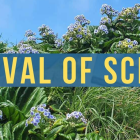
Blog and news
Chatham Island albatrosses - World Albatross Day
There are eight species of hopo/toroa/albatross resident in the Chatham Islands, amongst the 28 seabird species that breed in this remote archipelago. For World Albatross Day 2025, we’re giving you a quick rundown of the hopo/tora found in the Chathams today.
Northern Royal Albatross
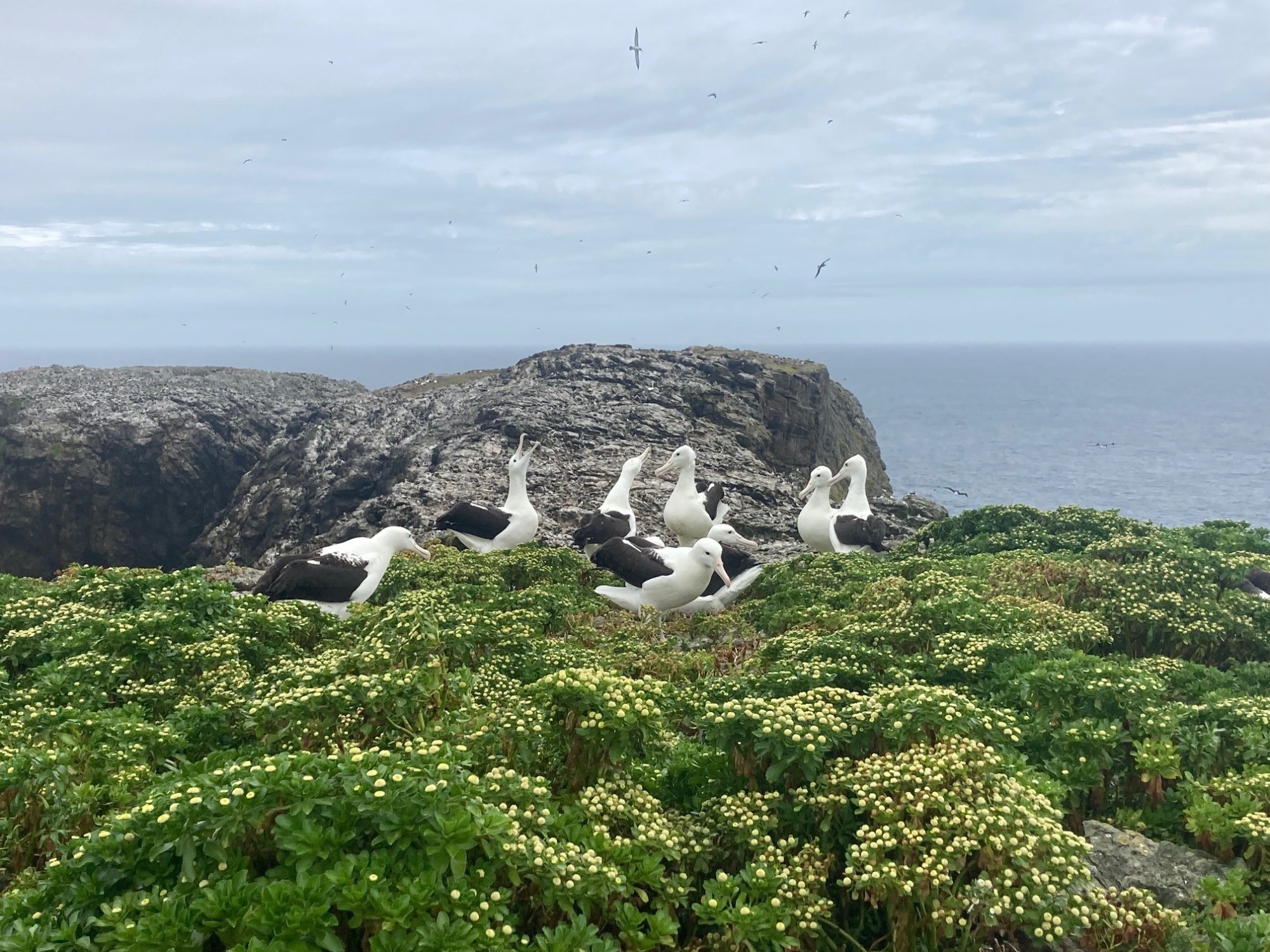
Northern Royal albatrosses and button daisy, the Forty-Fours. Image: Levi Lanauze
Conservation Status: Nationally Vulnerable
Nearly endemic to the Chatham Islands
The Northern Royal is the largest of the albatrosses regularly seen in the Chatham Islands, and amongst the largest in the world. It has a wingspan of 270-305 cm and weighs 6.2-8.2 kg. It’s distinctive for its entirely white body and head.
It’s almost endemic to the archipelago – about 99.5% breed in the Chathams Islands (on Motuhara/ the Forty Fours and Big Sister and Little Sister Islands). That other 5% breed at Tairoa Heads on the mainland’s Otago Peninsula.
Antipodean albatross
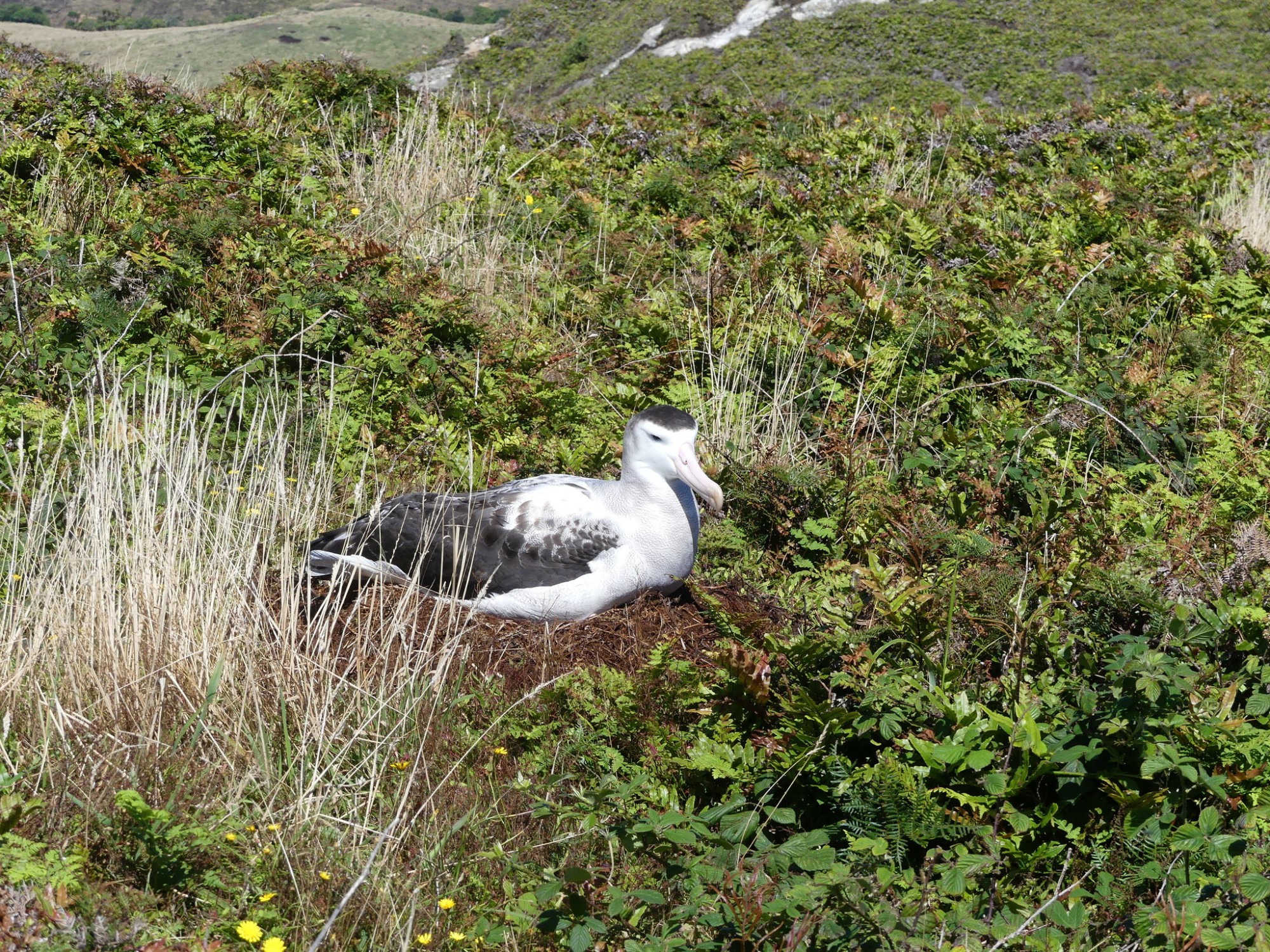
Antipodean albatross on nest, Pitt Island. Image: iNaturalist Christopher Chadwick
Conservation Status: Nationally Critical
Often considered a form of the wandering albatross, the Antipodean is similar in size to the northern royal with a wingspan of up to 3 meters, weighing in around 4.5-8.5 kg.
The females are darker than males, with brown over most of their body. The species are endemic to Aotearoa, and a couple of pairs have been successfully breeding on Pitt Island in recent years (from 2004). There are records of a pair attempting to breed on Rēkohu Wharekauri with no success so far. Most of this albatross species breed on the Antipodes Islands, south-southwest of the Chathams.
Chatham Island Mollymawk
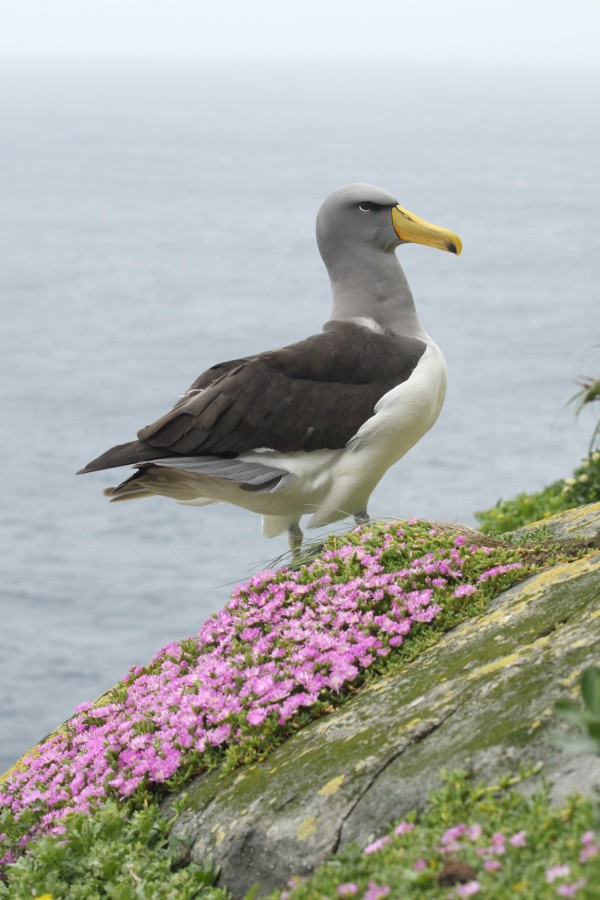
Chatham Island mollymawk on the Pyramid. Image: Dave Boyle
Conservation Status: Naturally Uncommon
Endemic to the Chatham Islands
This medium-sized, dark mollymawk is very distinctive: a grey head, back and wings, and a bright orange bill with a dark spot. It has a wingspan of 220cm and weighs around 3.1-4.7kg.
It only breeds on the Chatham Islands, confirmed to breed on the Pyramid – though some have been recorded unsuccessfully attempting to breed in the Snare Islands south of mainland Aotearoa and off Tasmania. It’s often seen foraging to the east and south of Rekohu Wharekauri and Pitt, and it winters off the coasts of Chile and Peru.
Learn more about this species.
Northern Bullers Mollymawk
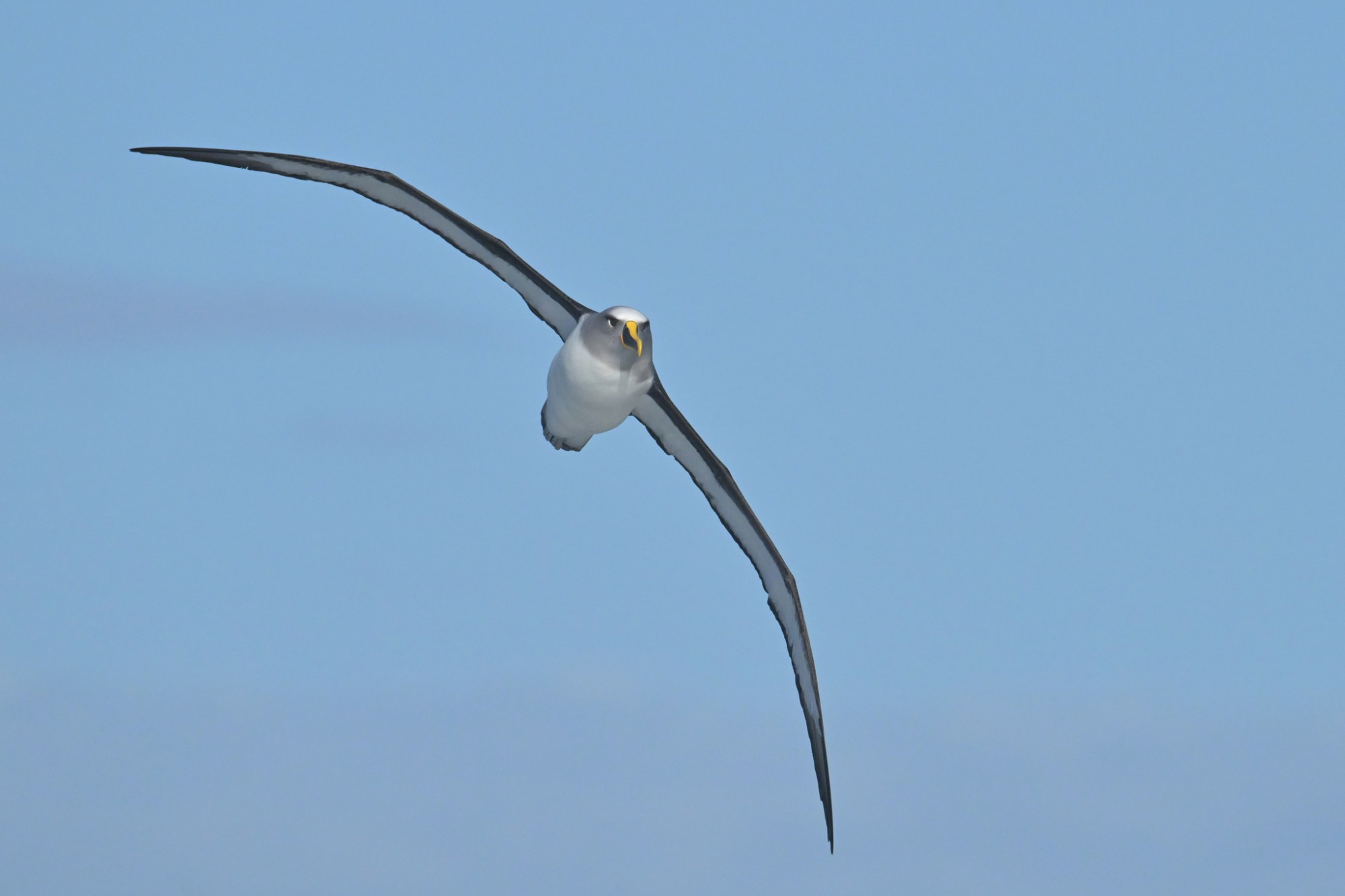
Northern Bullers mollymawk. Image: iNaturalist Christopher Stevens
Conservation Status: Declining
Nearly endemic to the Chatham Islands
One of the smallest albatrosses, the Northern Bullers has a 2m wingspan and weighs 2.5-3.5kg. It’s also known as the pacific mollymawk.
Although it mainly breeds in the Chathams on Motuhara/ the Fourty Fours and Little Sister Island, it’s quite abundant in coastal areas around Aotearoa, and is often seen following fishing boats around. There is a very small population on Three Kings Island off the North Cape.
Whitecapped mollymawk
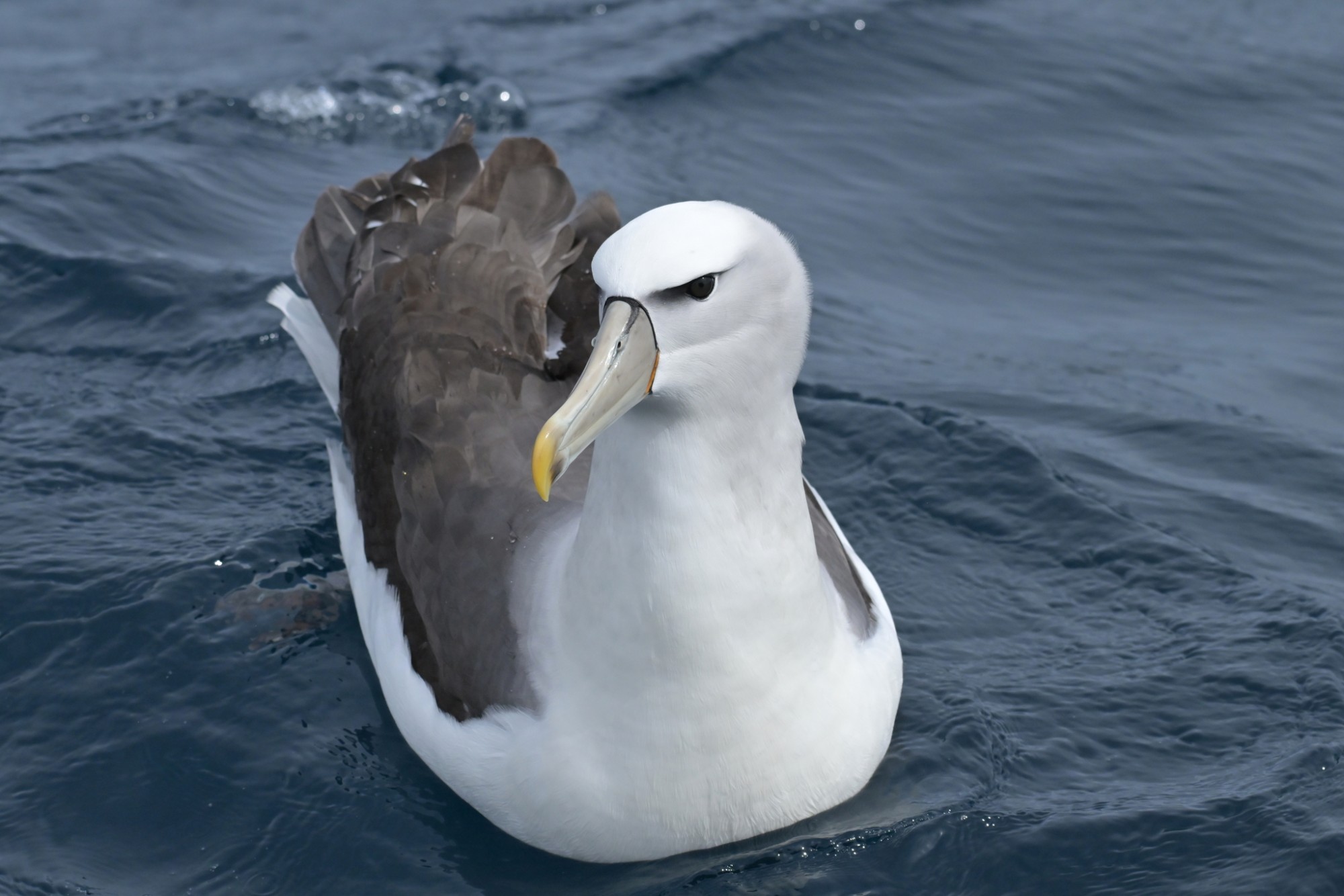
Whitecapped mollymawk or shy albatross in Chatham waters. Image: iNaturalist Christopher Stevens
Conservation Status: Declining
Also known as the shy mollymawk, this is a medium-sized albatross has a wingspan of 220-256cm and weights around 3.4 - 4.4 kg. Its white head and its bill (greenish in colour, with a yellow tip) can help distinguish it from other species like Salvin’s mollymawk.
Another endemic to Aotearoa, they mainly breed in the Auckland Islands, but there are records of them breeding on Motuhara/ the Forty Fours.
Salvin’s mollymawk
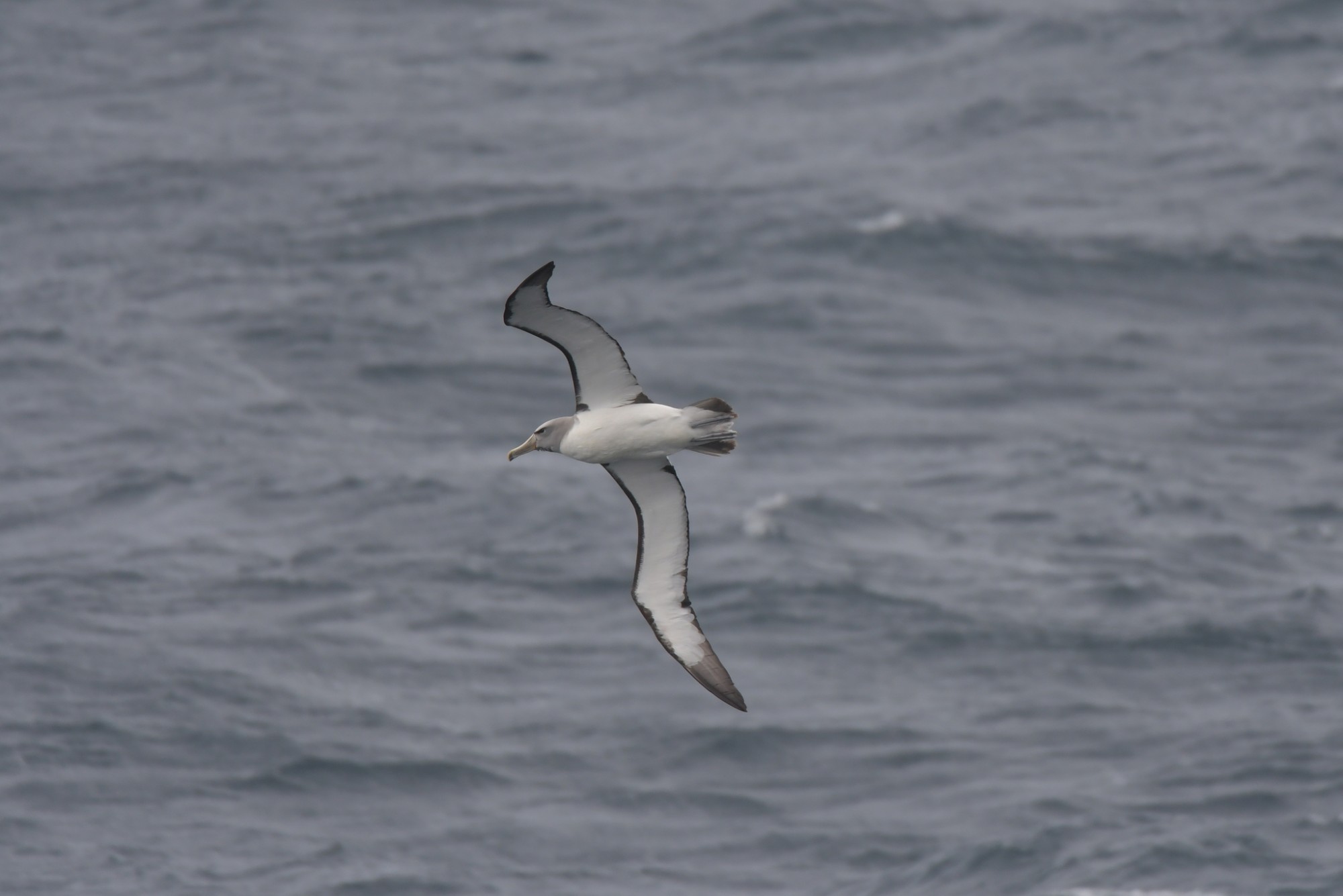
Salvin's mollymawk in the Chathams. Image: iNaturalist Christopher Stevens
Conservation Status: Nationally Critical
Another medium-sized albatross, these birds have a wingspan of around 256cm and weigh 3.3-4.9kg. Alongside the whitecapped, it’s the largest of the mollymawks (small albatrosses).
It mainly breeds on the Bounty Islands, south-west of the Chathams, although a few individuals have attempted to breed on the Pyramid. It’s closely related to the Chatham Island mollymawk and has been seen to pair with Chatham Island mollymawk on the Pyramid.
Indian yellow-nosed mollymawk

Indian yellow-nose mollymawk on Motuhara with Northern Bullers mollymawks. Image: iNaturalist Mark Fraser
Conservation Status: Coloniser
One of the smallest albatrosses, this black and white mollymawk has a wingspan of 160-215cm and a weighs 2.5kg. This mollymawk is unfortunately often bycatch in commercial longline fisheries around the world. Internationally, it’s classified as Endangered.
The conservation status “Coloniser” indicates that it arrived in Aotearoa without help from humans and has been successfully reproducing for less than 50 years. One or two pairs are known to have bred on the Pyramid, with sightings confirmed last season in 2024. All its other breeding sites are in the southern Indian Ocean.
Atlantic yellow-nosed mollymawk
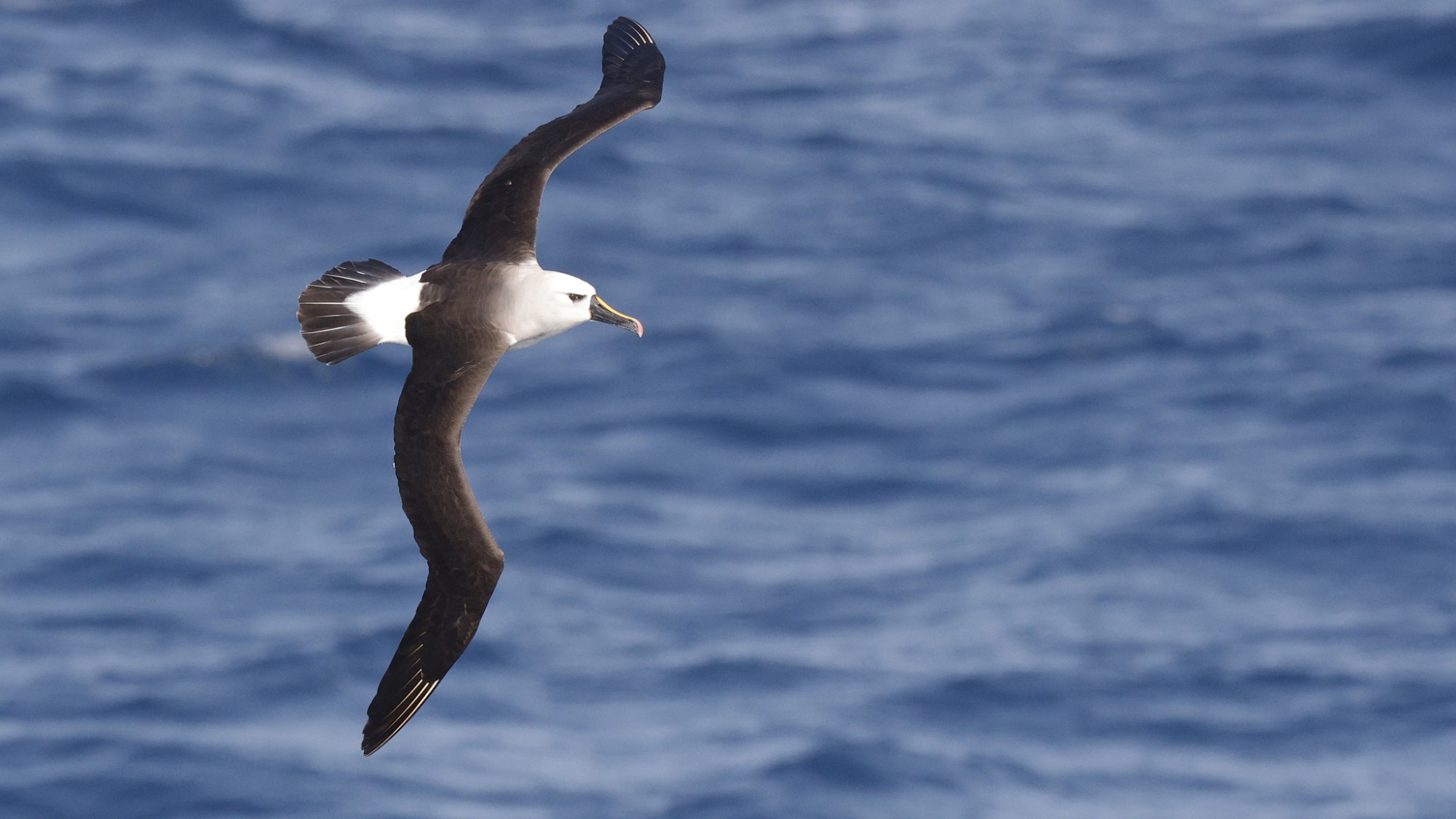
Atlantic yellow nose South African waters. Image: iNaturalist Ian L Jones
Conservation Status: Vagrant
Similar to the Indian yellow-nosed mollymawk, it has a wingspan of 1.8-2.1 meters and weighs 1.8-2.1kg. Its head is greyer, and it has a larger dark triangle in front of its eye.
This albatross breeds on islands in the Tristan da Cunha archipelago in the South Atlantic sea. Individuals in the Chatham islands have been seen on Little Sister Island and Motuhara/the Forty Fours. The conservation status “Vagrant” means there aren’t records of successful breeding so far in Aotearoa (although for this species, there has been evidence suggesting an egg was laid in the Chathams).
Threats to albatrosses
One of the biggest well-known threats to albatross comes from commercial fishing, when foraging albatrosses are caught on hooks and are drowned and killed as bycatch. Another is plastic pollution in the ocean. Albatrosses can mistake plastic objects for food and eat it or bring back to feed their chicks. This frequently lead to starvation or health problems.
Disease is another significant threat, and the theme of World Albatross Day 20205. The current outbreak of bird flu (High Pathogenicity Avian Influenza, also known as HPAI) has impacted thousands of birds around the world. So far the H5N1 strain hasn’t yet made it to Aotearoa. The Ministry for Primary Industries is the lead agency for this threat.
The impacts of climate change are another major threat, and particularly pertinent to the Chathams. Habitat is degraded as the severity of storms increases, removing soil and vegetation from nesting grounds on the rocky islets they nest on. This forces them to lay on bare rocks, resulting in a lower success of hatching chicks. Although albatross in the Chathams mainly breed on islets free of introduced predators, the presence of feral cats and rats poses a particular challenge for birds looking to find new breeding grounds.
Learn about the Chatham Islands' seabird-driven ecosystem.

The Summit of the Pyramid. Image: Dave Boyle
References
Birds of the Chatham Islands, published by the Department of Conservation

